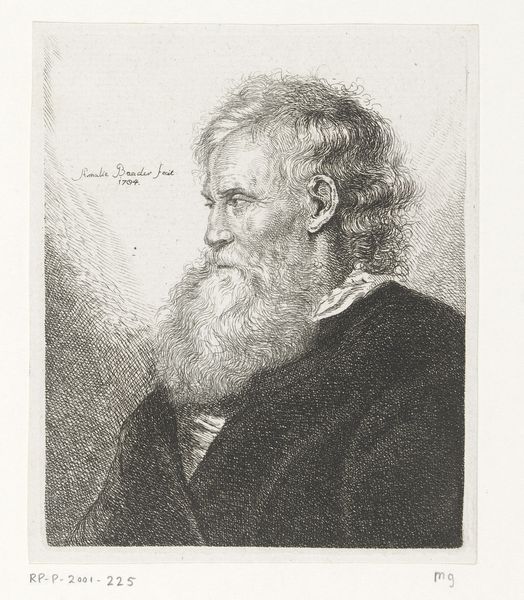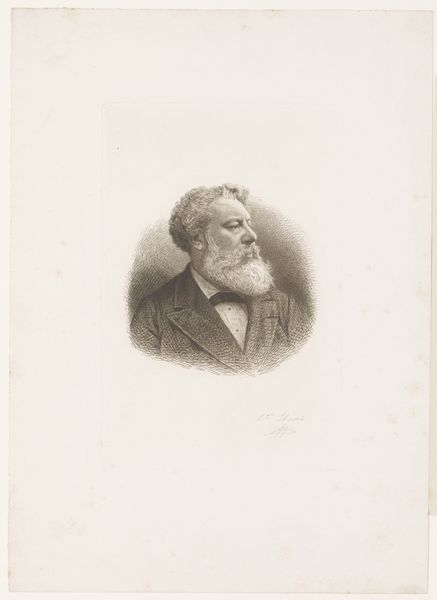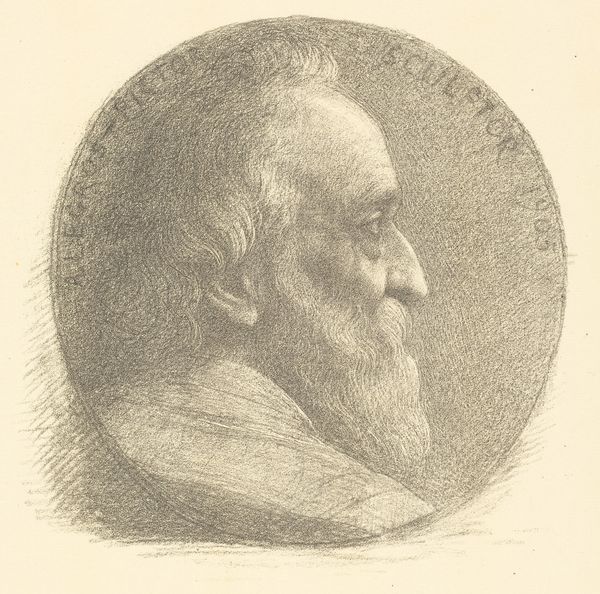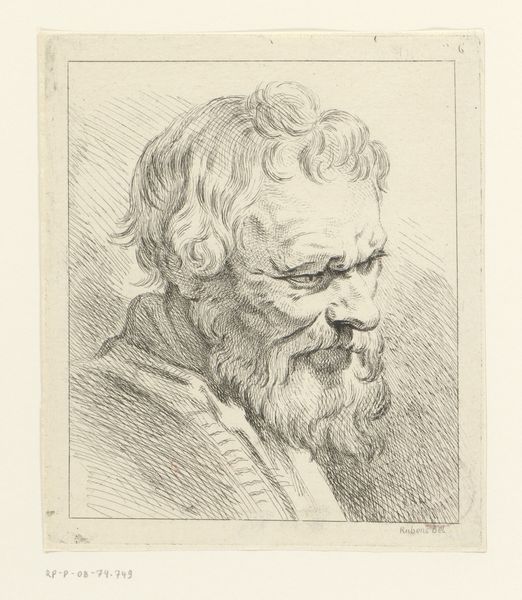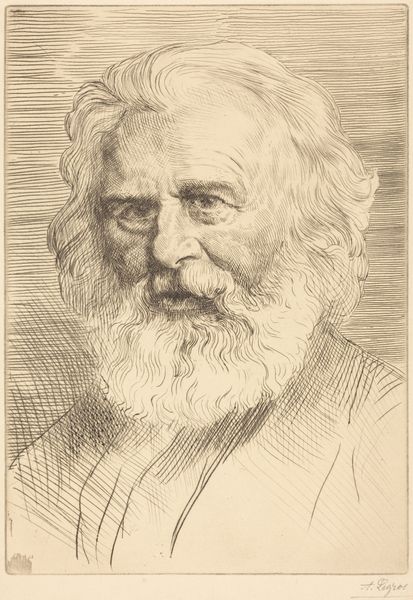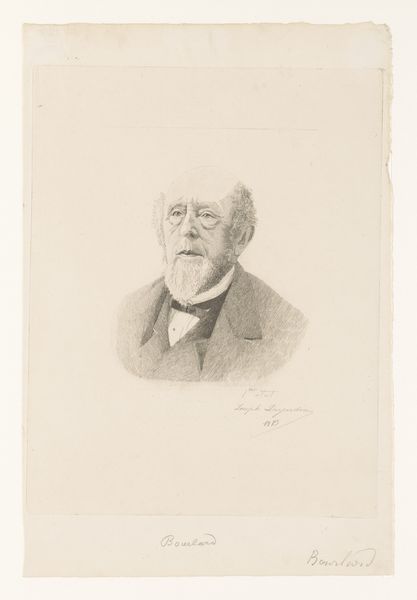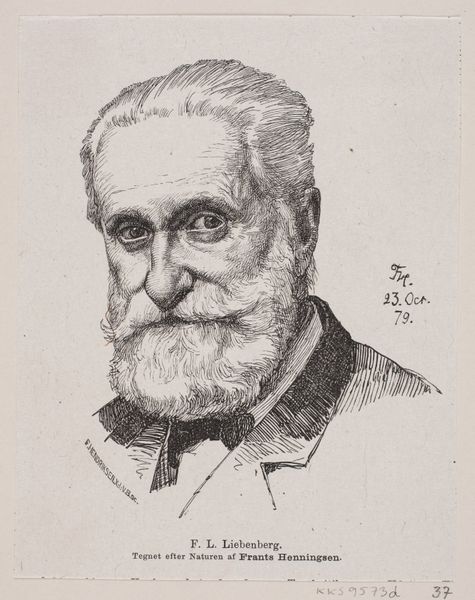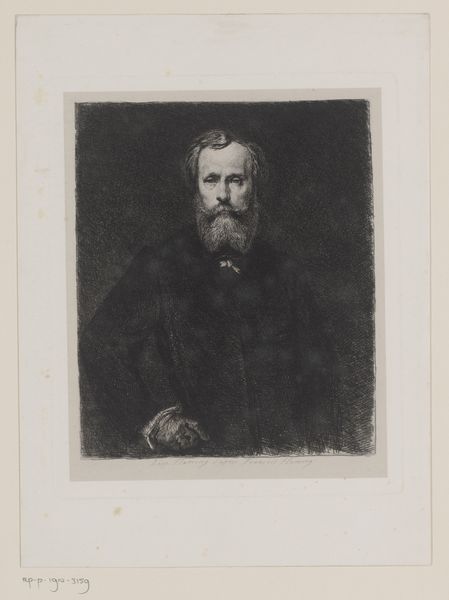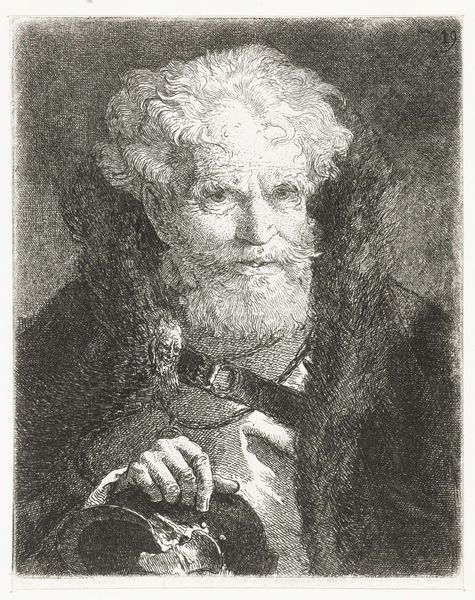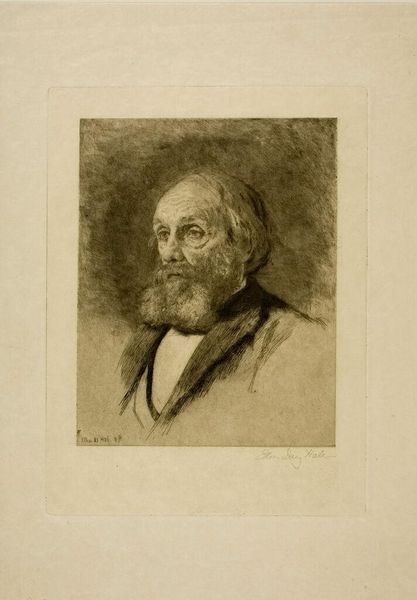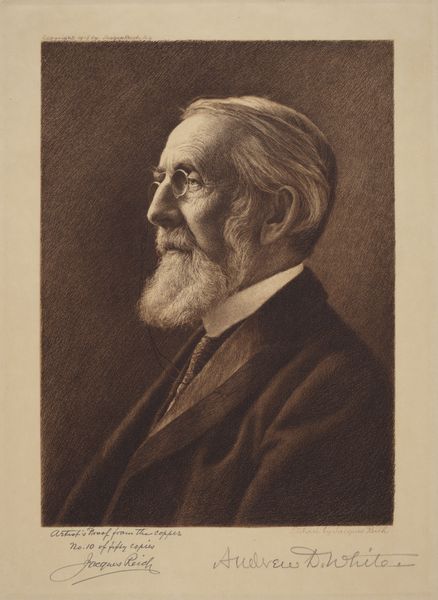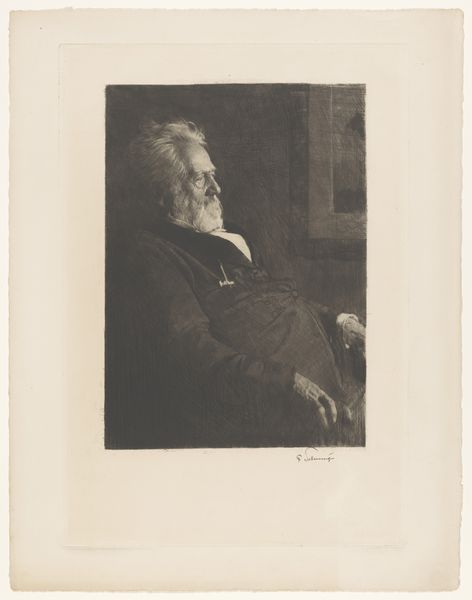
drawing, print, etching, pencil
#
portrait
#
drawing
#
facial expression drawing
# print
#
etching
#
charcoal drawing
#
portrait reference
#
portrait head and shoulder
#
pencil
#
animal drawing portrait
#
portrait drawing
#
facial portrait
#
portrait art
#
fine art portrait
#
realism
#
digital portrait
Dimensions: 273 mm (height) x 210 mm (width) (plademaal)
Editor: This is Frans Schwartz’s “Portrait of Johan Daniel Herholdt,” created in 1898. It appears to be an etching or print, giving it this wonderful, almost velvety texture. There's a quiet dignity to the subject. What do you see in this piece? Curator: I see a potent commentary on representation and power dynamics. Consider the date: 1898. Who had the privilege to be immortalized in art? The subject, Herholdt, with his respectable beard and suited attire, likely belonged to the Danish elite. How does Schwartz’s rendering reinforce or subvert the sitter's social standing through the lens of art history? Editor: Subvert, you think? I guess the detail, focusing only on his face… it doesn't show any trappings of wealth. Curator: Exactly! The artist directs our gaze. What are we meant to consider by observing Herholdt’s gaze, or the very fine lines of aging etched on his face? Is this an attempt to democratize portraiture, or is it simply an aesthetic choice that maintains established power structures? What stories does this work tell us about Danish society at the turn of the century? Editor: It’s interesting to think about what is included but also what is omitted. You almost expect a portrait of this era to have more symbols of status. Curator: Indeed. And how does Schwartz’s technique itself—etching, a medium capable of mass production—impact our understanding of the artwork’s potential accessibility and its relationship to a broader audience? Is it meant for an exclusive art world, or to disseminate his image more widely in society? Editor: I never thought about the implications of the artistic medium. This has broadened my understanding of portraiture, and I can appreciate Schwartz's choices to highlight certain socio-historical cues within his portrait. Curator: And hopefully this opens a new appreciation for seeing portraits not just as depictions of individuals, but as cultural and political statements in visual form.
Comments
No comments
Be the first to comment and join the conversation on the ultimate creative platform.
